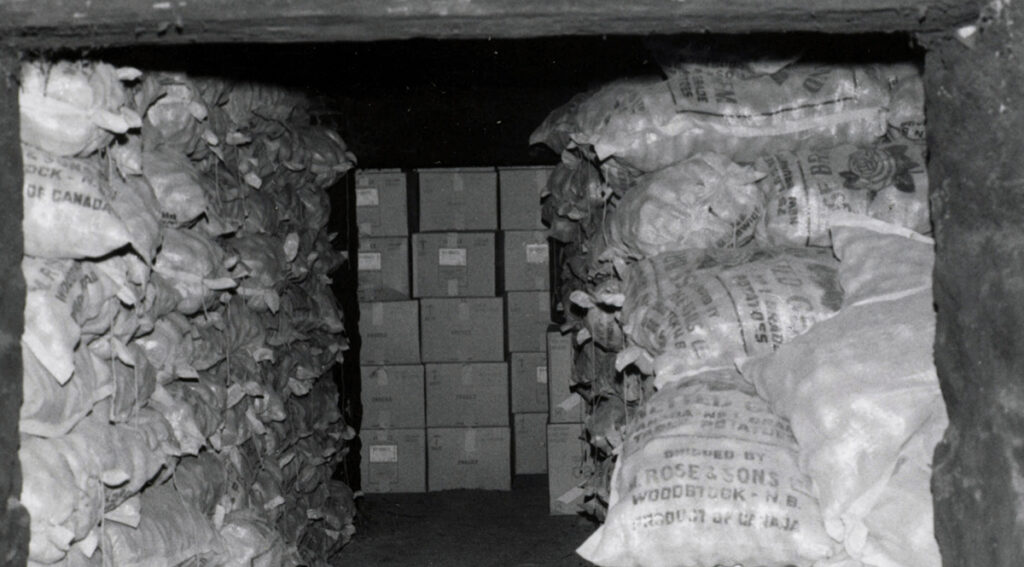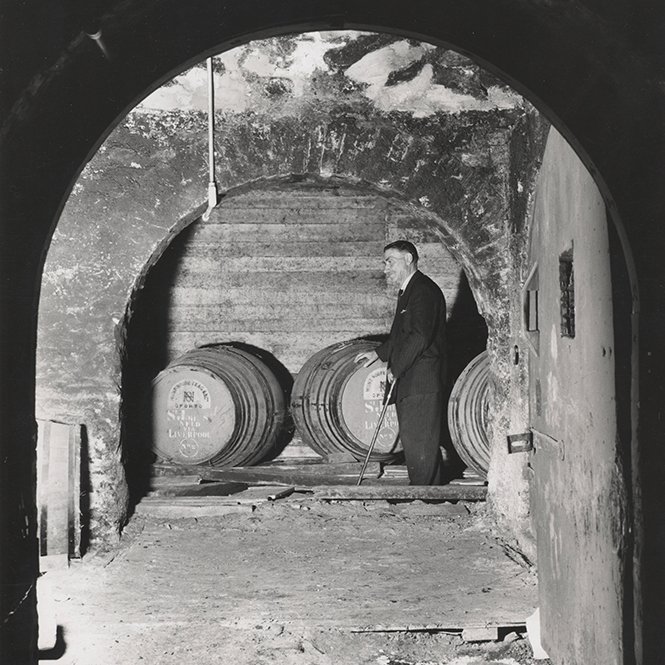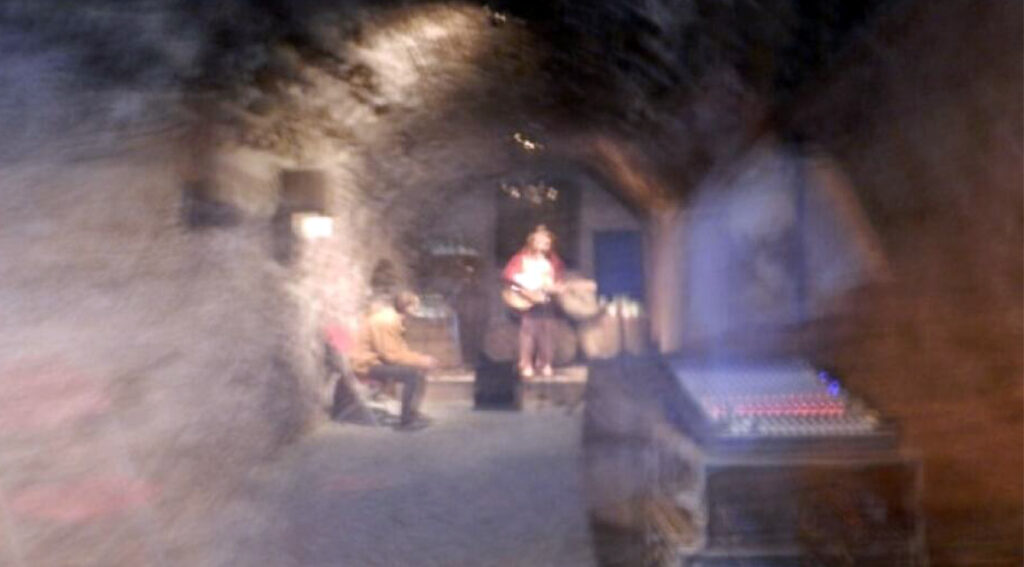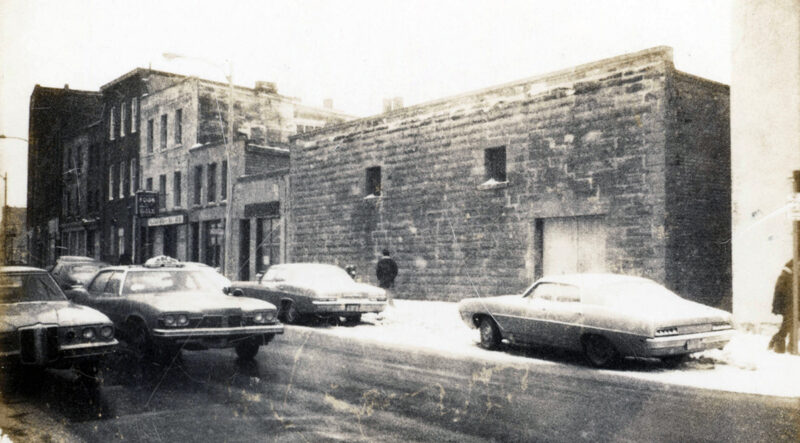When you dive into the annals of Canadian business history, most people would be right in thinking that the Hudson’s Bay Company monopolized most of it.
But in St. John’s, Newfoundland, the Newman family is on par with Hudson’s with its mercantile prowess.
A tie to that history still remains on Water Street, just south of Springdale, in the Rock’s capital city. And perhaps that tie to the Newman family has left an imprint that remains to this day.
Ask Dale Gilbert Jarvis, the intangible cultural heritage development officer with the Heritage Foundation of Newfoundland, about the Newmans and he’ll provide ample tales about their influence. (The family even married into the Sir Francis Drake’s lineage.)
“The Newman’s were this really fascinating company,” he said, in a June phone conversation. “Maybe outside of the Hudson Bay company, it’s probably one of the companies that has the longest history of activity in Canada.”
Bristol merchants who were sailing the seas in the 16th and 17th centuries and settling in Newfoundland were influenced by the Newmans.
“They were primarily fish merchants in the province,” Jarvis said. “As things like the slave trade progressed, they would do triangular routes, where they would get codfish in Newfoundland and take it down to the Caribbean for slave plantations and take rum and spirits back to Europe.”
Ship captain Robert Newman Jr. was the eldest of six boys to their father who ran a fishery in St. John’s in 1754. The younger Newman was named captain of the Syren. He would later become the head of the Newman family after both the deaths of Robert Sr. and his brother John in 1779.
The Newman family kept growing its operations in St. John’s after the American Revolution, and Robert Jr. would eventually pass the torch to his brother Thomas’ sons. After 100 years in Newfoundland, they gradually moved into the port business.
There’s a legend affixed to the Newmans and St. John’s. The Newmans had a house in Portugal that was tied to wine production, and they were importing port and Madeira from Portugal and they had left with some barrels of port, and the ship was attacked by a French privateer. They tried to shake their pursuer and the chase took them several days off course.
A storm pushed them further off course, and they decided to go to St. John’s to overwinter at the Newman’s plantation. They placed the port in caves in the south hills of St. John’s and loaded it up in the spring for a trip to England. Port was shipped to Newfoundland up until 1997 to be aged.
The current building that covers the vaults was built in 1909. But the fascinating part about the Newman Wine Vaults is the vagueness of its history. During the 20th century, it was used by a tobacconist, then as a storage unit for potatoes and eventually Javex bleach.
When Newfoundland entered Confederacy on March 31, 1949, the Newman Wine Vaults were used as a bonded warehouse. By the 1960s, the warehouse had been abandoned and eventually became the subject of demolition.
In 1973, an archaeological excavation of the property by Memorial University’s Robert Abraham Barakat uncovered that a structure was built around the vaults in the early 1800s.
“I was involved with the heritage community and, and we stepped in and said, no, this is an important building,” Jarvis said. “It was owned by the provincial government and at some point, had kind of been recognized as a historic site, but wasn’t really on anyone’s radar.”
During the late 1990s, the building was restored and was then used as an events hall.
That’s when stories of the uncanny became the imaginative flotsam during conversations perhaps in one of the many watering holes on George Street.
Creepy Canada’s big miss

At one point, the Newman Wine Vaults were used to store potatoes.
Many in Newfoundland’s capital have heard stories about phantom rapping and out-of-the-corner-of-the-eye sightings, and perhaps the vague past of the heritage site lends itself to phantasmagoric legends.
One of the stories from past employees has the sound of footsteps on crushed stone echoing throughout the building. There has been a concrete floor in the vaults for quite some time, but it was something that
The Newman Wine Vaults were featured on the Canadian paranormal series “Creepy Canada” back in 2003. The series, which featured renowned Canadian storytellers Terry Boyle and John Adams as narrators, would mix history with tall tales.
Tall tales they were, as Jarvis said were a conflation of different stories. In particular, a story was shared about a body being found in a barrel at the vaults.
“There was a story about the Newmans, but not from St. John’s about an English clerk who died in Newfoundland and had to be shipped back home inside a barrel of rum,” Jarvis said. “It’s something of an urban legend because there were all kinds of stories that this happened to various people like Lord Nelson, who was killed at the battle of Trafalgar.”
But what ghost stories can be shared are by some of the past employees of the vaults. Writer Kelli Blackwood started working there in 2003 when the site was run by the Newfoundland Historic Trust. She worked there in the summer and many people would declare the place was haunted.
“(Creepy Canada) wanted to do a segment based on it,” Blackwood recalled in a July phone conversation. “They got everything wrong when, but then I started having odd experiences there and the person who trained me, she had been there the year before she had had a number of unusual experiences.”
Those odd experiences were phantom voices. Employees would hear their names being called out while they were in the vaults.
Staff don’t leave through the front door facing onto Water Street. The side door is their exit, and on this particular Blackwood’s former colleague was washing some items in the sink. And she heard her name called from the area of the side door.
“That’s a really heavy metal door and it makes a really obvious clunking sound,” Blackwood said. “So that was one of the first times that she told me about it.”

In this undated photo, a gentleman stands beside
a wine barrel. The vaults were used to store
Portuguese port over the winter.
That begs the question of when she had her turn at being called upon.
“It didn’t happen to me until a few years later when there were two occasions,” she said, adding one time a visitor had entered the vaults while Blackwood was working by herself. “I heard a sort of sing-song voice say, ‘Kelli’. And I went into the vault, and (the visitor) wasn’t looking at me.
“I asked, ‘You called out to me?’ ‘No, I didn’t.’ ‘Oh, yes, yes, I heard my name called and I heard very clearly in the vaults.”
When it happened the first time, Blackwood chose to ignore it. But then the footsteps on the gravel floor became more noticeable. A reminder that the floors in the vaults are no longer crushed stone. In particular, she was working with a colleague named Janine, and they heard the characteristic crunching.
“She and I sat at the desk and we were probably not on our best behaviour that day, as we sat talking about things,” Blackwood said. “Then we heard the footsteps. We were like, ‘Oh my gosh, we managed to miss a visitor’.”
Two vaults meet up at the end, so the two women checked the area to discover no one was there.
Another experience had a colleague saying they heard someone running back and forth on the roof. The two went out onto Water Street to check the roof for any trespassers, but no one was there, “not even a bird”.
The uncanny experiences provided the impetus for Blackwood to do her own research into the building. She uncovered the story of John Nolan, who was from Catalina on the Bonavista Peninsula but lived in a rooming house on Springdale Street.
Nolan had disappeared, but it was known by the community that carried a large sum of money with him. He had disappeared around the location of Newman Wine Vaults.
Blackwood posited a theory given to her by a woman who visited the vaults. She claimed to be a psychic and that Nolan had a gap between the original ceiling of the warehouse, which was built in 1903, and the vaults and was buried elsewhere on the site.
“So, I started calling the so-called ghost John, just to have something to call him” she admitted. “One of the things that really struck me when she said that, because he was hidden there, he was desperate for food and that he ate a cat that had been either been tossed in or had found its way in or whatever.”
What unsettled Blackwood even more was that when the site was excavated, archaeologists had discovered half the body of a cat.
Where John is buried is suspect, but Blackwood points to a small room that employees affectionately called the “Little jail”.
“If you look at the floor, that little room was built sometime around the 1880s, and the floor is a brick floor, which is unusual for the vaults and it’s four to five inches higher than the rest of the building,” she said, adding that the full details could not be confirmed.
John was allegedly photographed while the Vaults were under the auspices of the Newfoundland Historic Trust, and at that point, they used to have wedding receptions.
The wedding photo

Before Denielle Hann and Matt White’s Newfoundland reception, their friend Karen Hanlon captured this image of “John”. The photo caught the attention of the CBC back in 2011.
When Matt White had a second wedding with his fiancée Denielle Hann at the Newman Wine Vaults in June 2011, the last thing he expected was for a guest to snap a ghostly shot.
The couple originally tied the knot in Jamaica, but for those guests who were unable to attend the destination wedding, White and Hann held a second reception at the Vaults.
Their neighbour Karen Hanlon was at the reception while it was in the process of setting up and she snapped a quick photo of the musicians doing a sound check. What she captured, from behind the soundboard, was a man in a white shirt.
“We were aware of the history of the Newman Wine Vaults. I mean, it’s something that is very public and you know the stories of some weird things happening there,” White said, in a July phone conversation. “But we certainly didn’t feel weird or didn’t feel haunted or anything while we were there.”
The digital photograph was a minor blip on the evening that went well, but White did remember Hanlon initial reaction reviewing the snapshot.
“Karen saw that right away,” White recalled. “When she looked at it on the back of her camera, she gasped right away.”
For Jarvis, it seems to be just a trick of the light. He admitted to hearing an explanation for the photograph from a friend who worked at the bar. One evening, a man admitted that it was him in the photo.
“She said one night, when all this was kind of floating around town, that there was this ghost in the photograph and the wedding and whatnot apparently this guy came into the bar and he said, Oh yeah, that’s me in the photograph.
“I tend to think that a lot of that stuff isn’t too verifiable.”
Regardless of skepticism, White is fascinated that the CBC story is still getting traction after nine years.
“I like the fact that the story has gotten a little bit of attention, and the fact that we got to experience a little bit of that history at the Newman Wine Vaults while we were there,” he said. “It’s very cool.”

